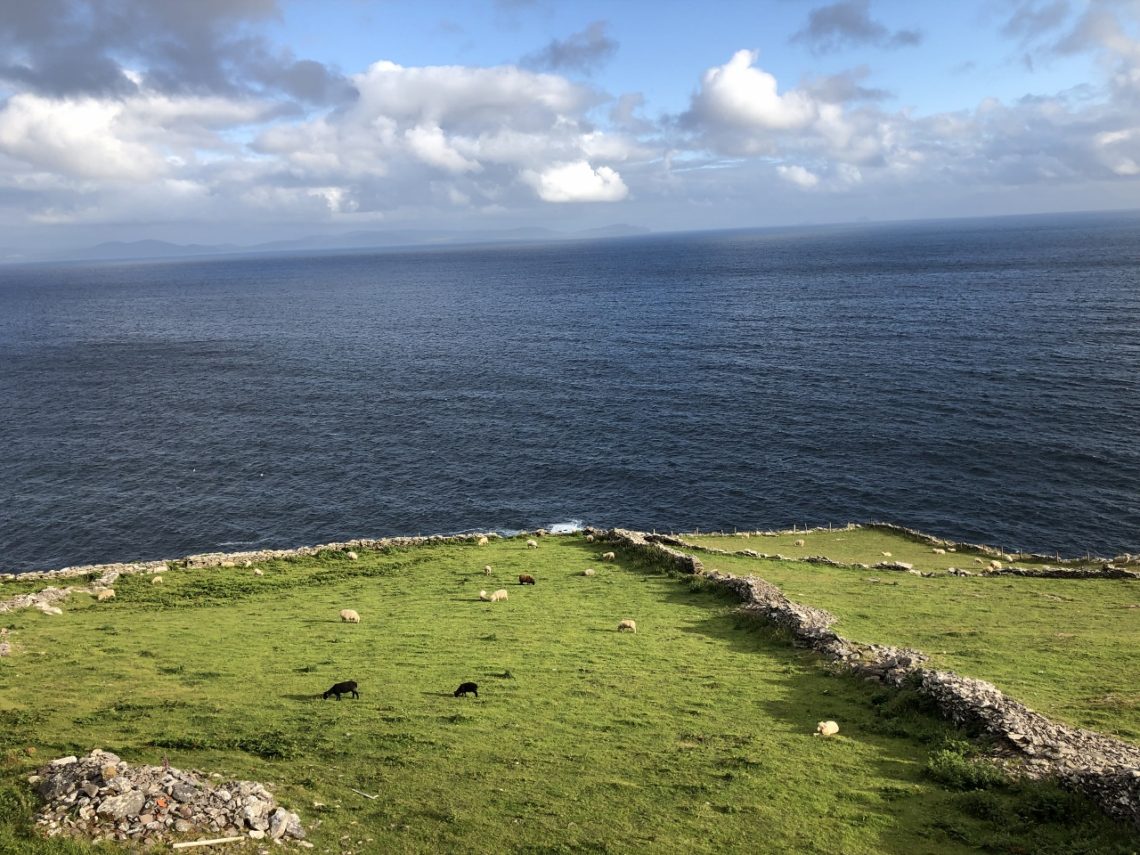
The Dreamy Dingle Peninsula
My favorite place on Earth!
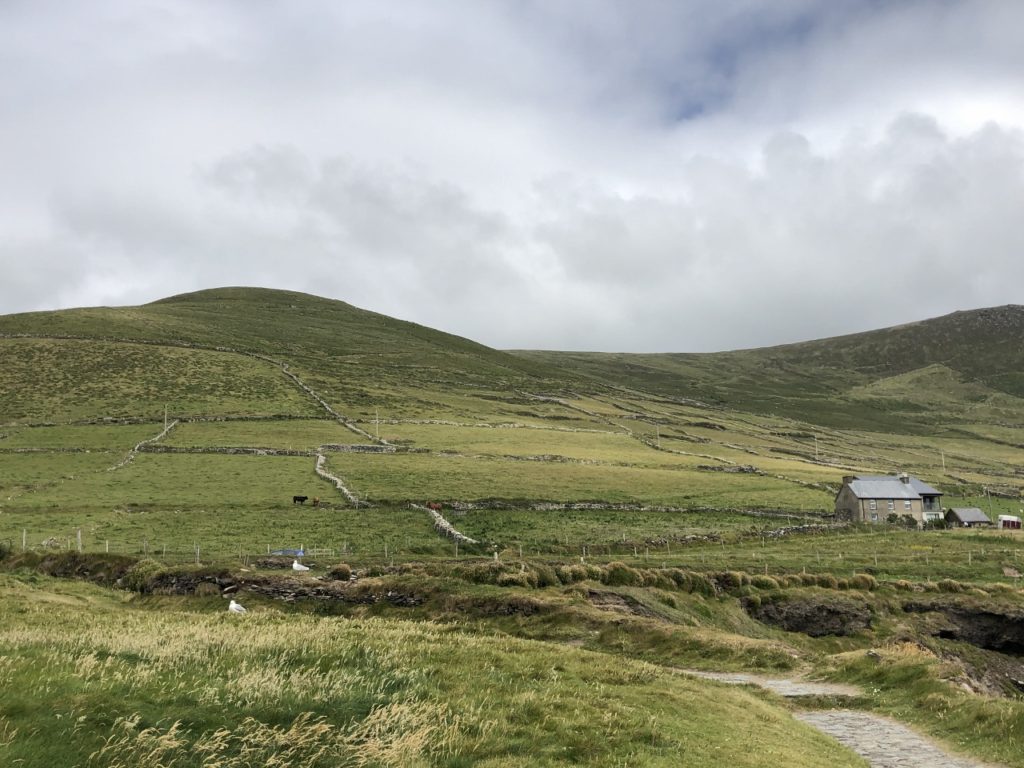
Where is your favorite place in the world? I thought for a while about which destination to highlight first, and then I decided I might as well start with my favorite. Out of everywhere I have been, the Dingle Peninsula in Ireland, is my favorite place in the world! It is jaw dropping gorgeous, peaceful, and full of unique history. This is the Ireland you picture in your mind – the 1000 shades of green sectioned off by old rock walls with sheep roaming the hills, the pastures, and the roads. If you want to experience rural Ireland, this is the place to do it! In fact, I love it so much, I almost want to keep it to myself!
I have been three times, and most recently, there were more tourists than the first two times I went. So, I think word has gotten out! But don’t let that stop you! It is still a great place to go. Although there were more people around this time, it is still not over-run by tourists – yet. I hope it never is!
There is VERY limited public transit on the Dingle Peninsula, so MOST of the tourists, come in on a motor-coach through companies like CIE who provide guided tours. These folks generally stop and get out for short photo opportunities and get right back on the bus. The trick is to get out earlier in the day to avoid the buses. They usually don’t make it to the area until the afternoon.
In fact, my first two visits to the Dingle Peninsula were on two CIE guided tours of Ireland, and that is exactly what we did. Stop. Get off the bus 5-15 minutes. Take some photos. Get back on the bus. No time for exploring. BUT, I fell in love with the magic of the place! I will blog more about the coach tours some other time – they were great and served a purpose.
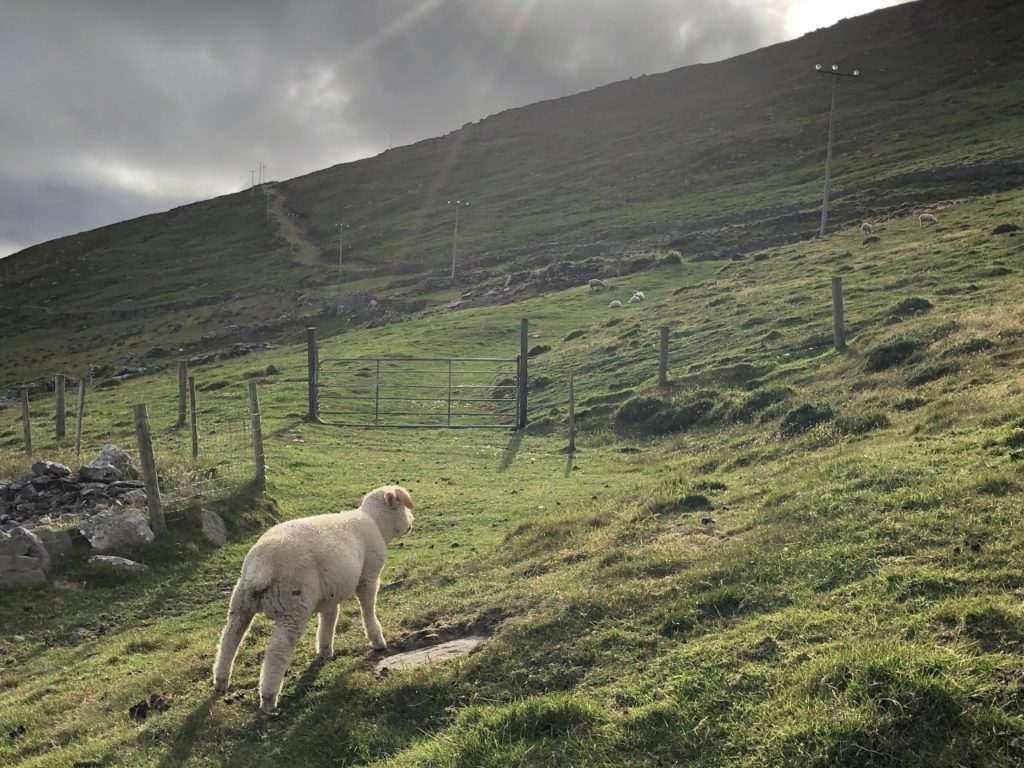
Dingle Peninsula, Ireland
This past summer, I got the opportunity to spend two nights on the Dingle Peninsula, and it was like a dream come true! Was it long enough? No. Not even close for me, but it was so much better than just riding through! You really need a week if you want to see and do everything and still have time to just take it all in. I am typically pretty bad about trying to see everything there is to see, and I often miss out on just enjoying the city/town/village etc. But enjoying the area was actually my priority for this trip to Dingle, and I think I did a pretty decent job!
Transportation & Lodging
Let’s start with getting there and get the boring, but necessary, stuff out of the way first. You can fly in to either Shannon or Dublin. Shannon, like the Dingle Peninsula is on the west side of Ireland. Dublin is on the east. Shannon is about a 2.5 hours drive and Dublin about 4 hours. My recommendation is to rent a car and enjoy the experience.
It is possible to get from either airport to Dingle (the town) by bus or bus/train/bus combo. The bus/train/bus combo looked pretty inconvenient when I was trip planning – I wouldn’t recommend it. From Dingle (the town), there is the 275A bus that goes out to the peninsula a little ways, but it doesn’t run often. You can check out the timetables here if you are considering this option. As I said before, public transit on the Dingle Peninsula is very limited. If you rely solely on the bus, you will miss A LOT!
We arrived in Dublin and chose to rent a car. Even though our car hire (rental) experience in Dublin was a little crazy, I still recommend renting a vehicle. You will get to see way more of the peninsula, and not waste all of your time waiting around on public transit with multiple connections and limited availability. You may have to wait for livestock to clear the road. Seriously. Sheep. Cows. But that is part of the journey!
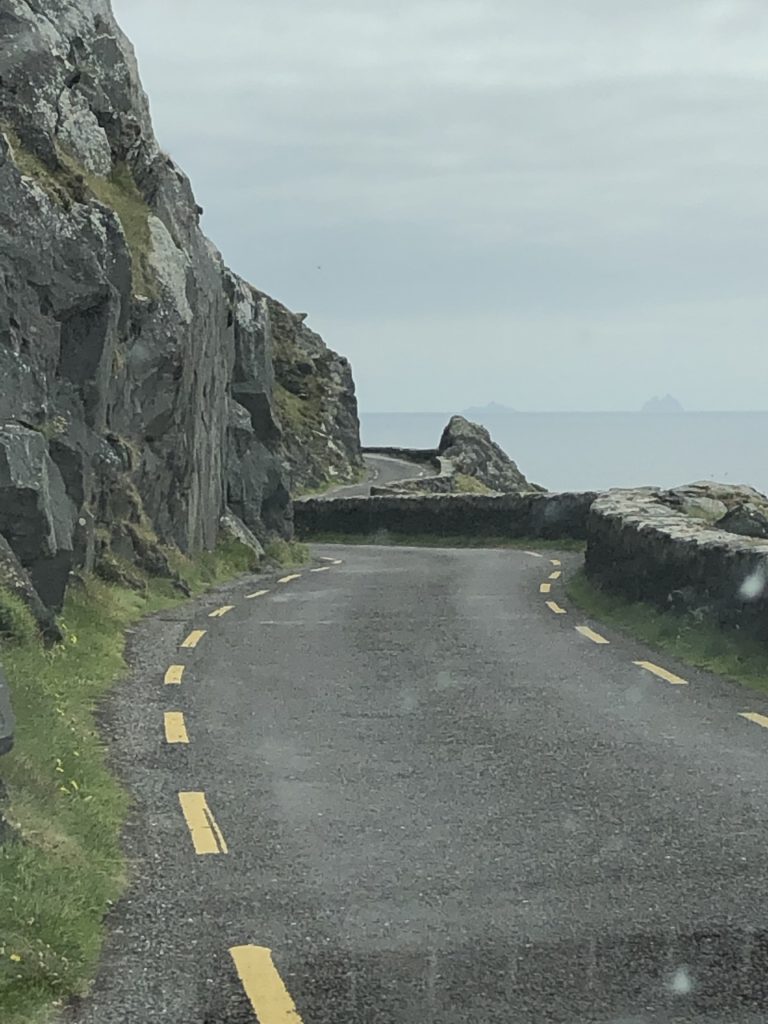
Slea Head Drive
We rented from Enterprise because it was familiar. I do not recommend them in Dublin. They were a hot mess. We also arrived into Dublin on the train from Belfast, and rented from a city location near Croke Park – on a match day. Who knew. Traffic was crazy. There were pedestrians everywhere. It was insane. I feel like it would be easier renting from the airport. Also, I have rented previously in Europe with Europecar, and will continue to do so from here on out. But enough about that.
Keep in mind if you are renting a car, they drive on the “right hand” side of the car. My husband got several eye rolls when he would talk about driving on the wrong side of the road. Haha! You will also need to have some grace for yourself and a little bit of a sense of humor! Seriously! We had already been driving for a week in Scotland on the “right hand” side of the car, but we didn’t make it more than three blocks down the road before curb checking! Luckily there was no damage. We ran into some folks at our Bed & Breakfast who were waiting on new tires!
We had also purchased new maps for our Garmin (yes the old kind you stick to the window). I couldn’t get it to work. We tried to use the GPS in the car, but the map was so small we couldn’t see it and kept missing our turns. The street signs are on the sides of the buildings there and not as easy to see. We finally pulled over into a parking spot when we could, so I could figure out the GPS. It helps if you switch the country from Scotland to Ireland! By that time my husband, who hates city driving by the way, had already driven so far across downtown Dublin that it was closer to the N7 to just keep going. He literally drove all the way across Dublin. It was a nail-biter but we made it. Once out of the city, it was easy peasy all the way to Dingle!
We stayed in an old Irish farmhouse I found on Airbnb with amazing views of the ocean, sheep on the hill (and one that jumped the fence and hung out in the front yard and in the road), lambs you could feed, and beehive huts (more on this later) on the property. I was in Heaven! It was so peaceful! And right on Slea Head Drive! This is one of those places you can’t get to on the bus, so you will have to have a car if you want to stay here. We stayed in Room 1 which had a king size bed and its own bathroom.
The farmhouse itself is full of history. It is 150-ish years old. The property has been in the owner’s family for centuries. And if all of that isn’t enough, their property was used in the filming of the movie “Far & Away,” and they have photos of their grandmother with Tom Cruise in the living room. I hope beyond hope that I can be a repeat customer here!
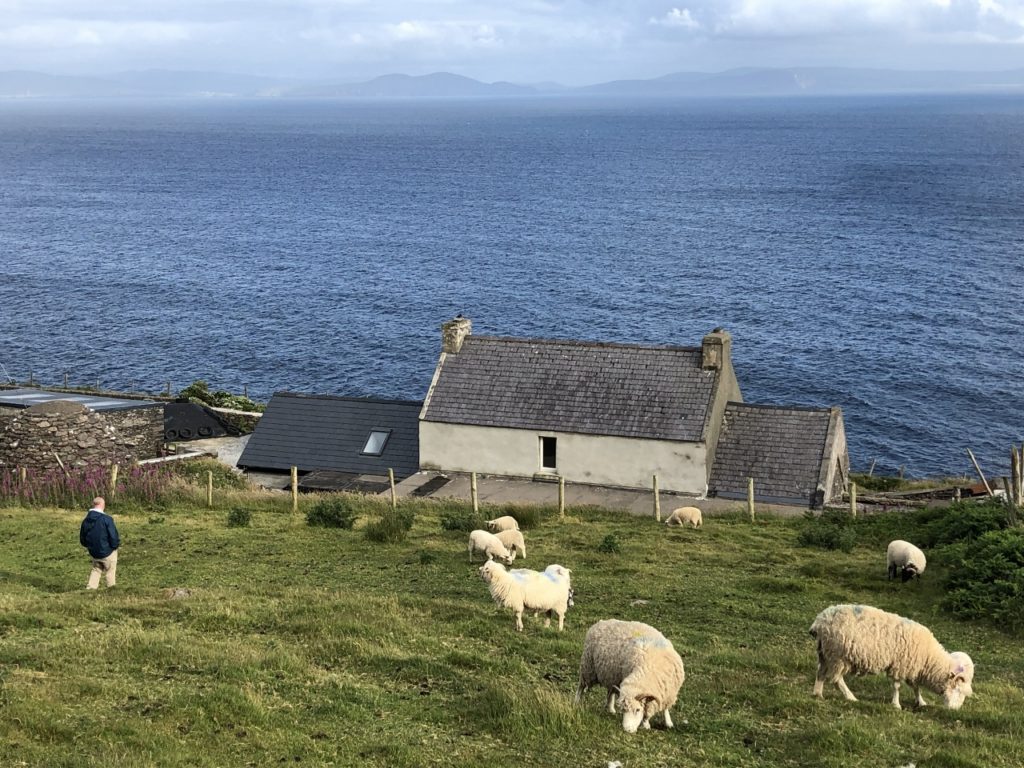
What to do? What to do?
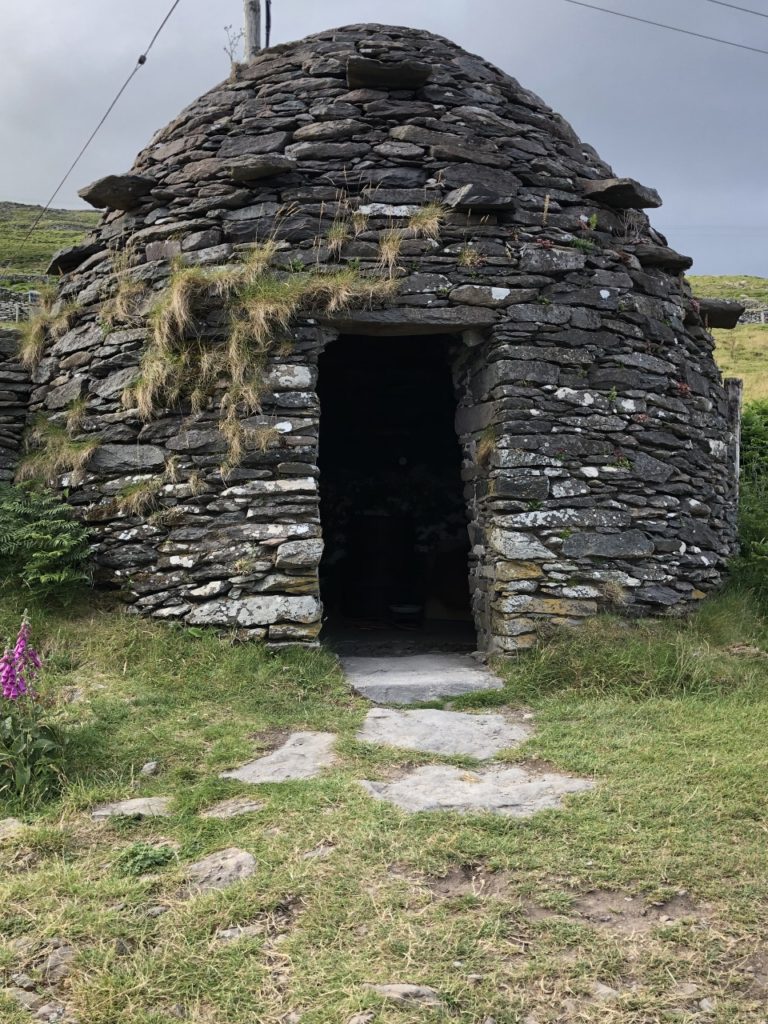
Dingle Peninsula
Now, back to the Beehive Huts! Like I said, these Beehive Huts are on the property. Literally steps away from where you will sleep. What are Beehive Huts, you ask? Great question! And I don’t even have a clear answer! This is where the history begins! Beehive Huts are round stone structures. There is disagreement regarding their age and their use, but they are dated between 700 AD and 1100 AD. Some believe that monks lived in them and others claim they belonged to families pushed off of their land by the Normans. Whatever the case may be, they are cool! Imagine having something like that on your property! I can’t even!
What else is there to do on the Dingle Peninsula? Well, there is plenty of hiking, although sadly, we did not have time for any major hiking. Next time! I mean, we only had one full day, so we only had time to walk around and explore the property we stayed on which I thoroughly enjoyed! There is also Dingle (the town), Fungi the Dolphin, Slea Head Drive, the Kilmalkeder Church, Gallarus Oratory, Clogher Head , Coumeenole Beach, Rahinnane Castle ruins, Irish Famine Cottages, and an odd little place called the Celtic Prehistoric Museum. So here is our Dingle in a day…
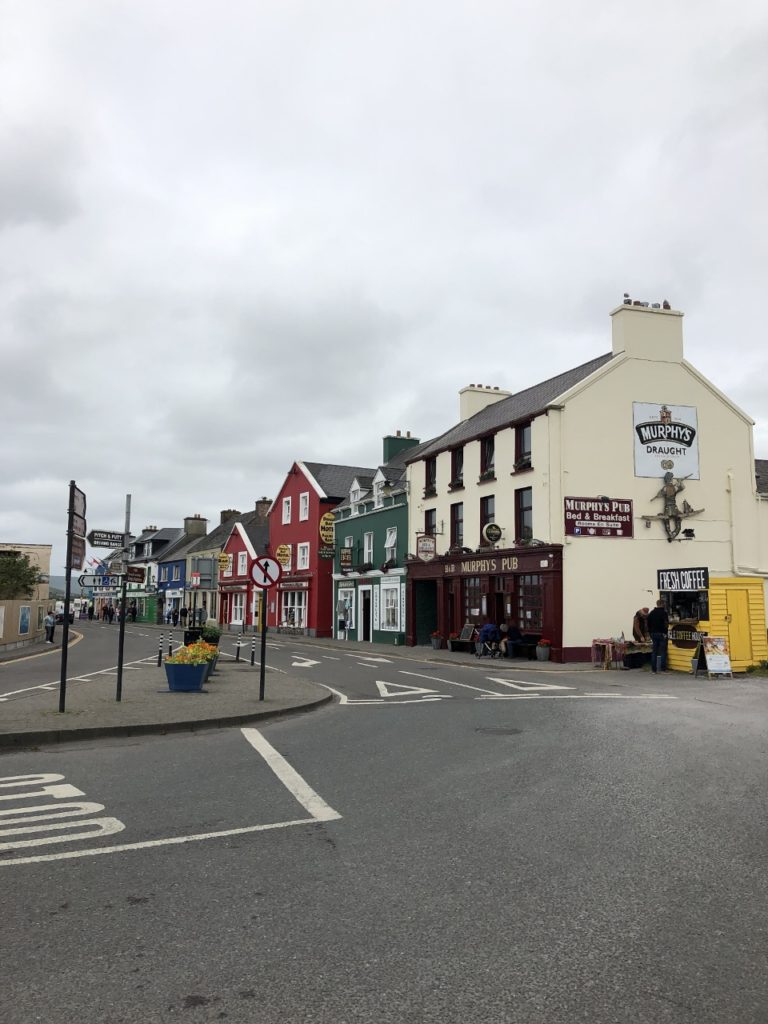
Dingle is the main town on the peninsula. It has a small harbor, and lots of shops and pubs on its main road. It is fun to wander around. We were actually able to do this for a short while! Near the harbor is a sculpture of a dolphin. His name is Fungi. He is apparently very friendly and frequently plays in the wakes of boats. He is quite the celebrity, so I would be doing you a disservice if I didn’t at least mention him. You can take a Fungi Cruise, but I can’t vouch because I have not taken one. Maybe next time.
The Slea Head Drive also begins (and ends) in Dingle. It is part of the Wild Atlantic Way, and some say the most beautiful part. I would agree! The drive takes you in a loop along the coast of the peninsula. This is where you will see sheer cliffs dropping into the ocean, beautiful beaches, rising green mountains strewn with old rock walls, and other cool historic sites (like the Beehive Huts)! The drive should easily take you a day if you are stopping along the way to see and do things.
I already mentioned getting an early start to avoid the tour buses. Another suggestion I would make is to travel the loop in a clockwise direction. We did not, and toward the end of the day we had several run ins with tour buses that required us to back up to the nearest lay-by. The buses take the loop clockwise so if you do too, you won’t run into this issue. Trust me. The roads are narrow. You don’t want to mess with this! Thankfully, we were almost back before we ran into it!
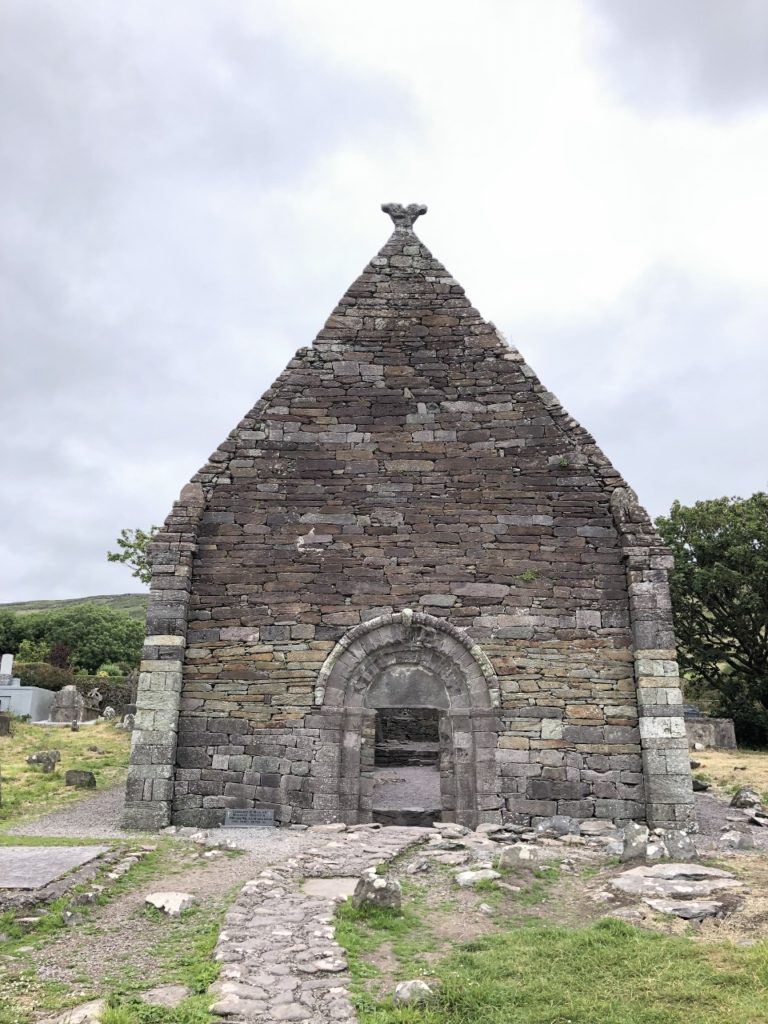
Our first stop was the Kilmalkedar Church. The ruins of the current structure date back to the 12th century although the church was founded in the 6th century. You can go inside the church and look around. It is free. Inside the church is a 6th century stone marked with a cross, the Latin letters DNI for Domini, and the Latin alphabet. The assumption is that the stone was used to try to teach students the Latin alphabet.
In front of the Kilmalkedar Church is an old cemetery. Inside the cemetery is an Ogham stone. Ogham was the first written Irish language. It was used between the 4th & 9th centuries. Letters are made using a pattern of lines and dots. The Dingle Peninsula actually has several of these stones. It is believed that they marked land claims or grave sites. This particular Ogham stone has been translated to read “name Mael Inbir son of Brocan” so I am guessing it is a grave marker. The early church often took over pagan religious sites and converted them for their purposes, so this would make sense. There is also a pretty cool old stone sundial out in the cemetery.
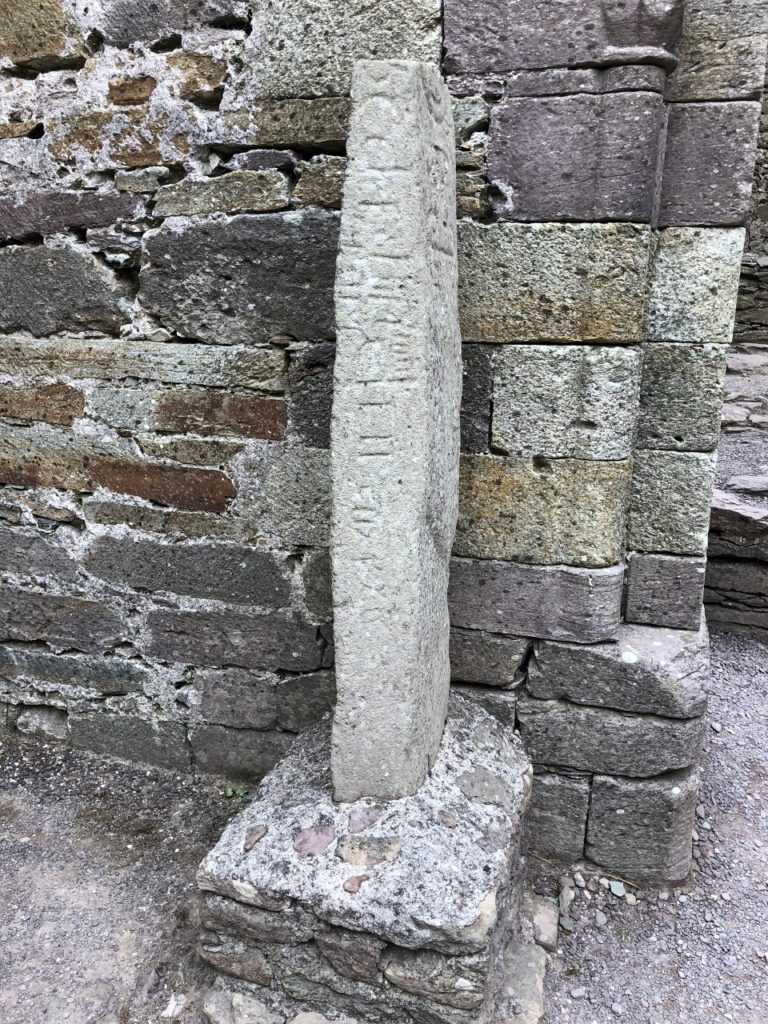
Latin Stone 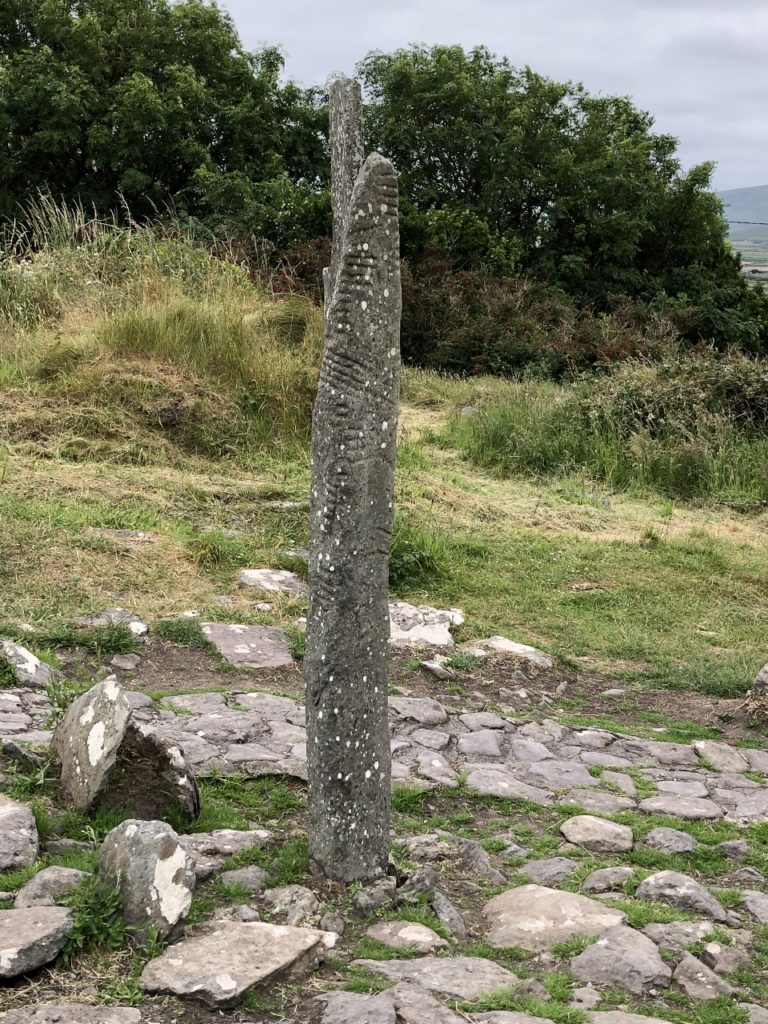
Ogham Stone 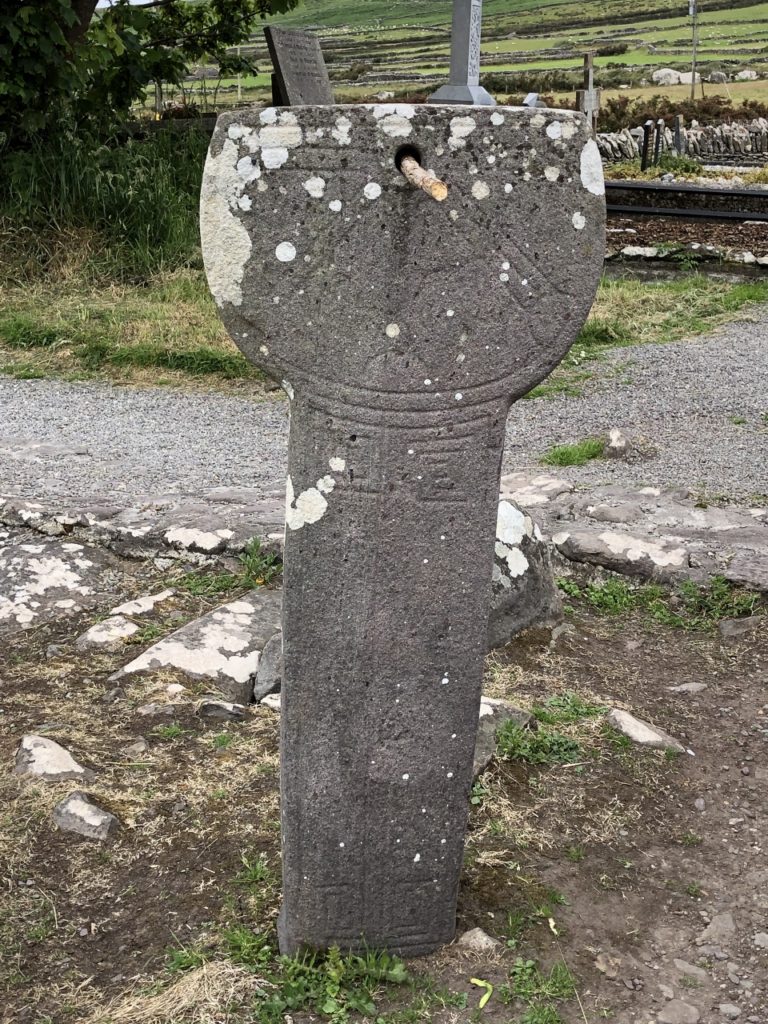
Sundial
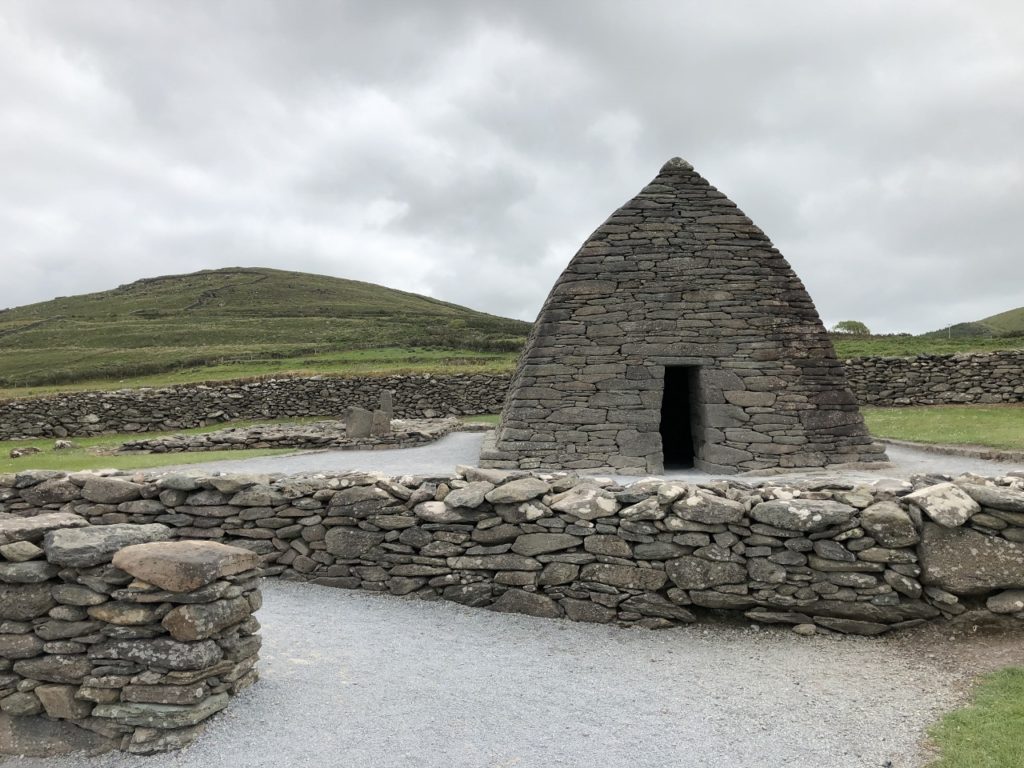
Dingle, Peninsula
Our next stop was the Gallarus Oratory, which is an old church dating back to the 7th or 8th century! The quality of the stonework has kept this place mostly water tight even to this day! The church has an east-west alignment so that the sunlight will always shine through either the window in the back or the door in the front. You can go inside the church and walk around the outside. There is a visitor center that has a short film on the history of the Dingle Peninsula. Admission is free.
From Gallarus we drove to Clogher Head, and got out to walk around a little. There are amazing views from here! You can see Mt. Brandon, the Three Sisters, Clogher Beach, Sybil Head – a filming site for “The Last Jedi,” and the Blasket Islands! Another Ogham stone is located somewhere around here, but we didn’t have time to look for it. This is where we ran into most of the bus traffic, and it was difficult to find a place to park. So take the loop clockwise and you should be fine!
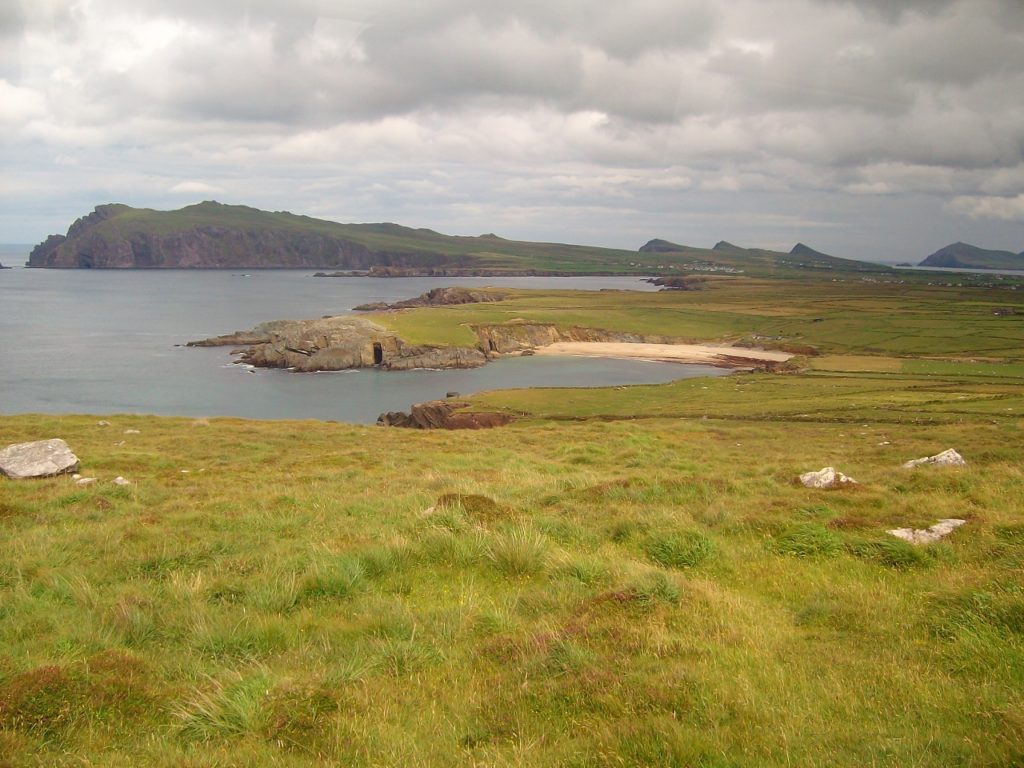
After successfully maneuvering around several buses at Clogher Head, we stopped at Coumeenole Beach. This is one of those places I fell in love with driving through in the motor-coach! It is gorgeous from the road. Again another Ogham stone is located here somewhere. But again, no time to look. This is why I need to go back soon! We did walk down to the Beach from the car park, and it was pretty. I waded only to my knees because the water was frigid, but some brave souls were swimming. The movie “Ryan’s Daughter” was filmed here, but I confess I have never seen it!
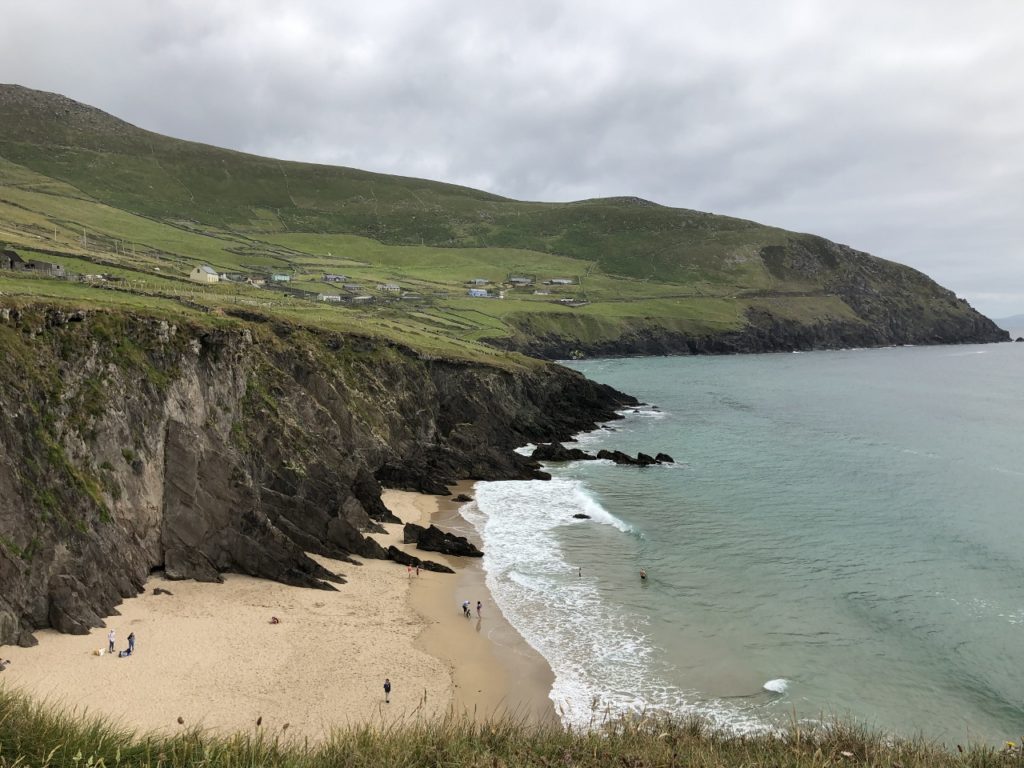
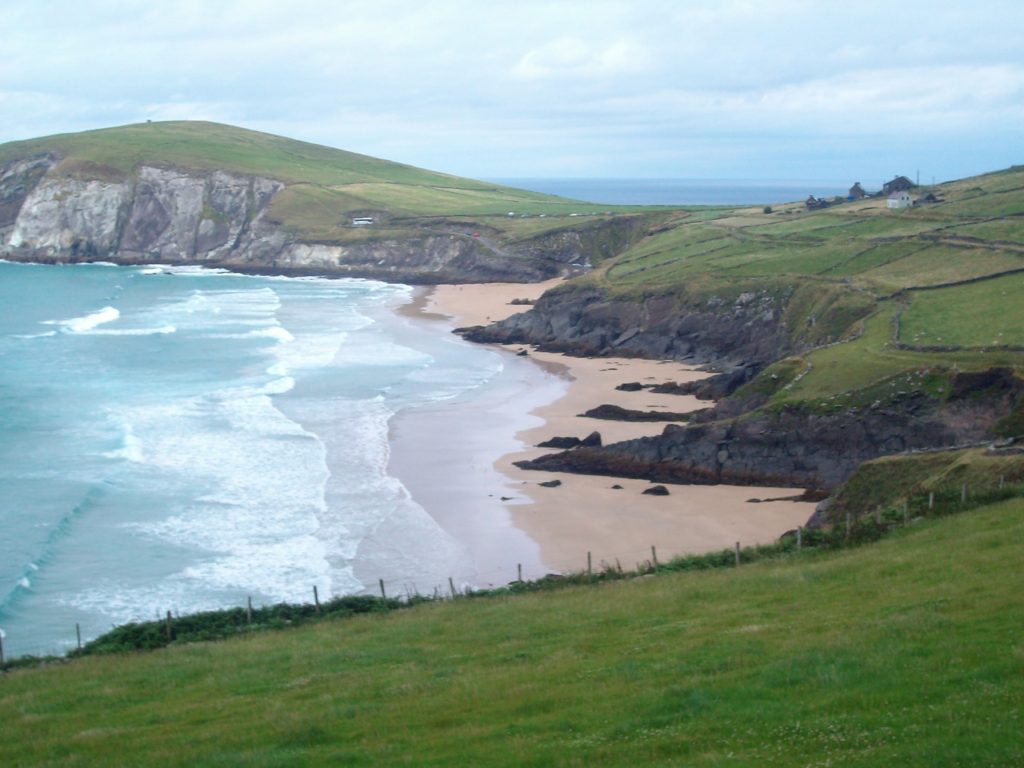
Coulmeenole Beach
Our next stop was at the eclectic little Celtic Prehistoric Museum. This place was amazing! It is the owner’s private collection, and let me tell you – it is impressive!! This museum has a woolly mammoth skull WITH the tusks intact, a prehistoric cave bear skeleton, a complete juvenile psittacosaurus dinosaur skeleton, and a petrified nest of eggs from the hadrosaur family of dinosaurs, along with lots of other ancient artifacts and jewelry. I was VERY pleasantly surprised by this place. It was very well worth the 5 Euro per person admission. If you are into history, I would call it a “must see” simply due to the wide variety of artifacts!
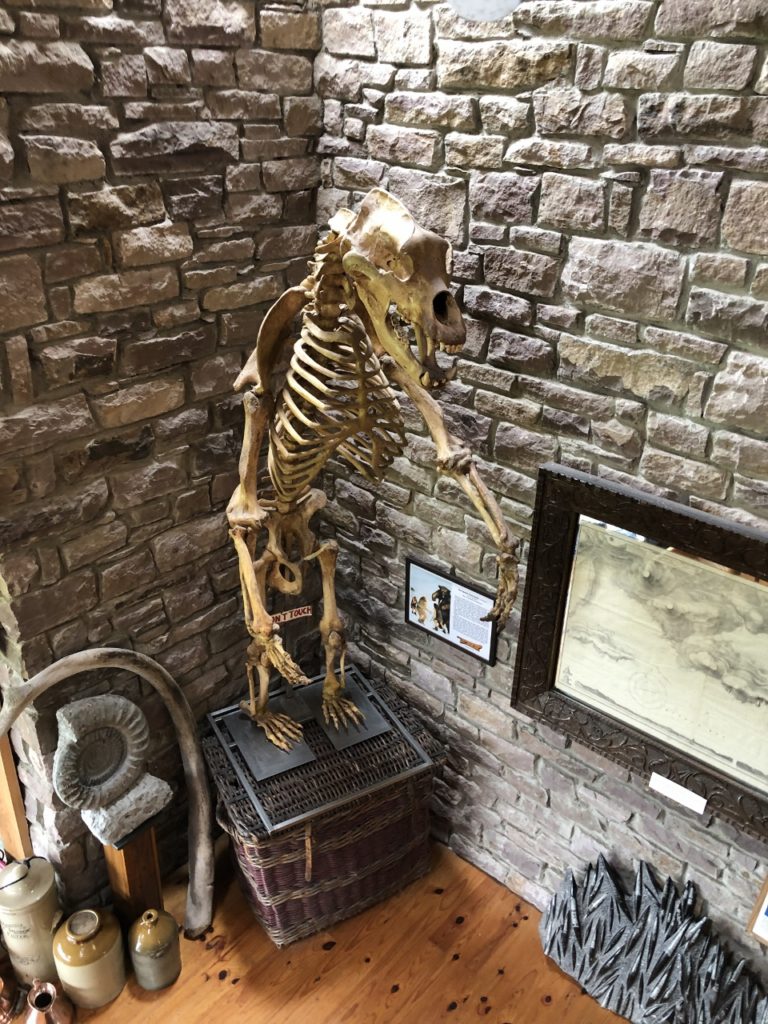
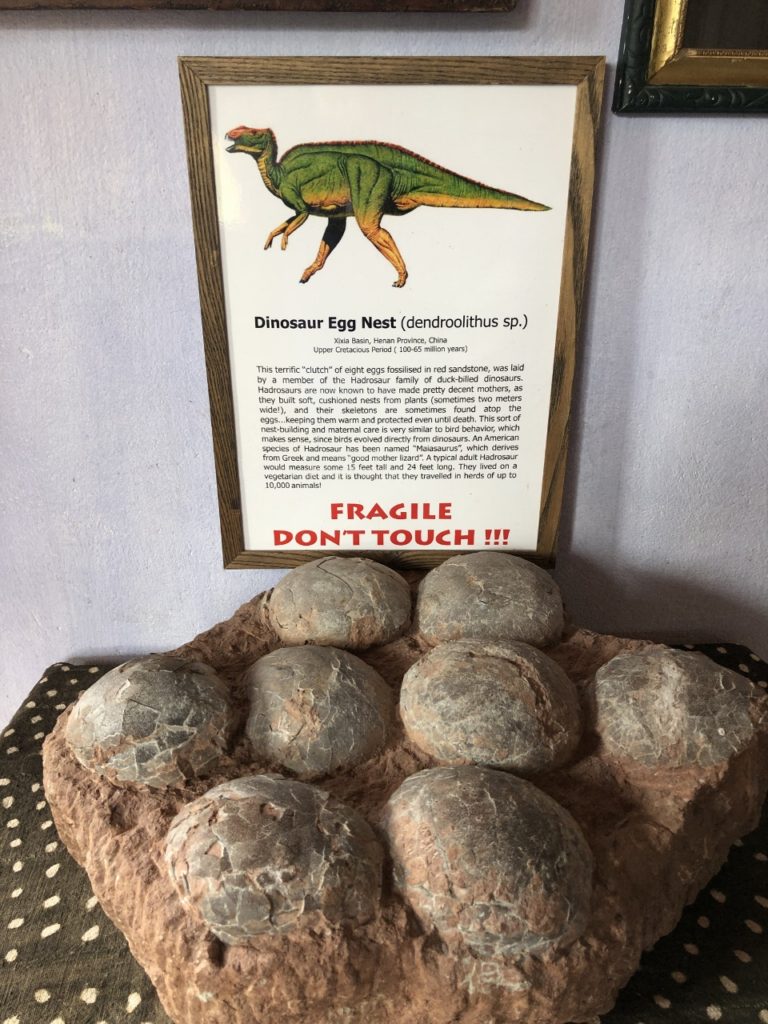
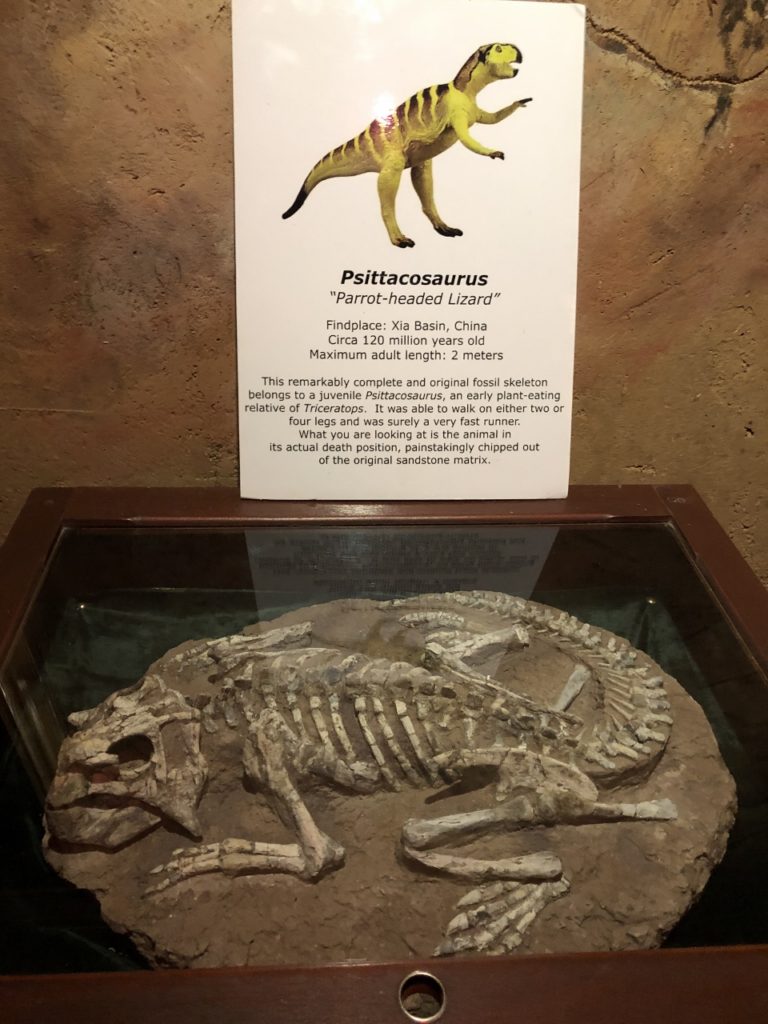
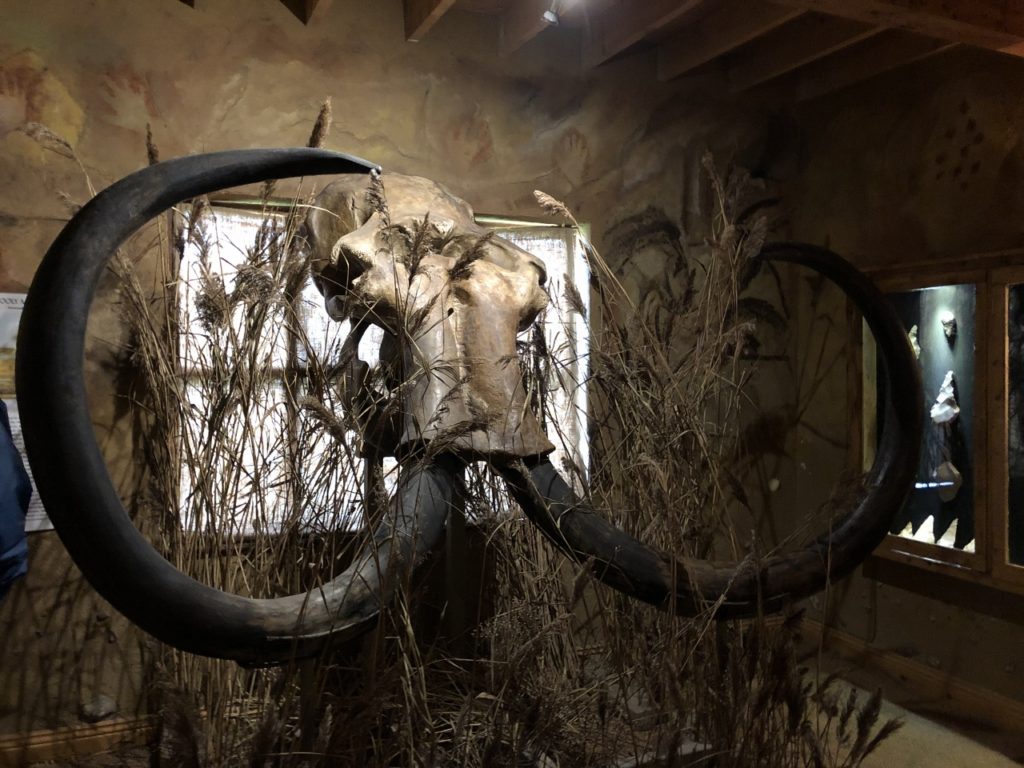
Celtic Prehistoric Museum
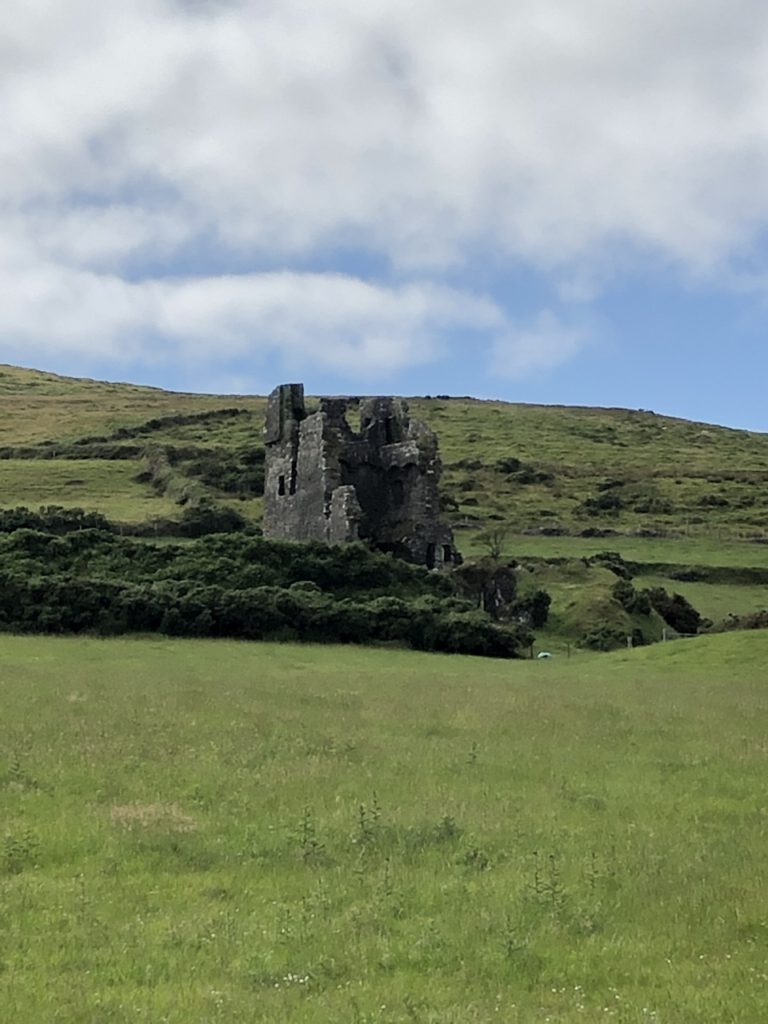
By now we were hungry so we drove on into Ventry and had dinner at Paidi O’Se’s. The food was good, and they have lots of photographs on the wall of their famous visitors. After dinner we headed toward Ballybeg to see the Rahinnane Castle ruins. This tower house is on private land (again, can you imagine?), so you need to get permission from the owners to wander around. We did not because it was getting late, and I still wanted to make one more stop. So, we just took photos from the road. The tower house is also surrounded by a ring fort, so it goes on my list for next time.
Our last stop of the evening was at the Irish Famine Cottages. We did pay 3 Euros each for this site, but we learned so much! The cottages themselves were a little dusty, but that probably just adds to the authenticity. And I do wish they did not have the scary mannequins. Haha! The site consists of the farmer’s cottage and smaller peasant cottages. It is well signed, and inside one room (I think in the farmer’s cottage) there are several plaques that outline many aspects of the Great Irish Potato Famine that began in 1845, general background information, landlords, workhouses, burials, and emigration.
The potato made up 60% of the Irish diet and in the poorer western communities it was 100% of their diet. An Irish man typically consumed 14 pounds of potatoes a day! When the potato blight hit it affected everyone. Landlords were responsible for relief for all small holdings valued at 4 pounds or less. This and the inability of tenants to pay rents led to landlords evicting over 250,000 people from their land between 1849 and 1854. During this time a total of over 500,000 people left their holdings.
The Poor Law of 1838 had established workhouses for some of the poor. The idea was to provide food and shelter in exchange for work. During the Famine, they became very overcrowded. Conditions were nasty. People were poorly clothed, slept on the floor on straw, dysentery and other diseases ran rampant. Families were separated and only allowed to see each other on Sundays. Burials took place in mass graves behind the workhouses.
In the local parishes, there were so many deaths that coffins were running low. They began to use “drop coffins” to transport the deceased from their home to the cemetery. The bottom of these coffins were hinged so that the bottom could open to drop the body into the grave and then be used again for the next person. One parish priest reported attending 10 burial per day!
Emigration also increased dramatically during this time. “Assisted” emigration was offered by some landlords as an option other than eviction. Landlords would help pay passage for their tenants on “coffin ships” as they came to be known. Quarters in these ships were comparable to those of the slave ships. Many died en route. Between death and emigration, Ireland’s population decreased by 25% during the Famine! Like I said, this place was VERY informative, and that is just what I remember and wrote down in my journal from our visit!
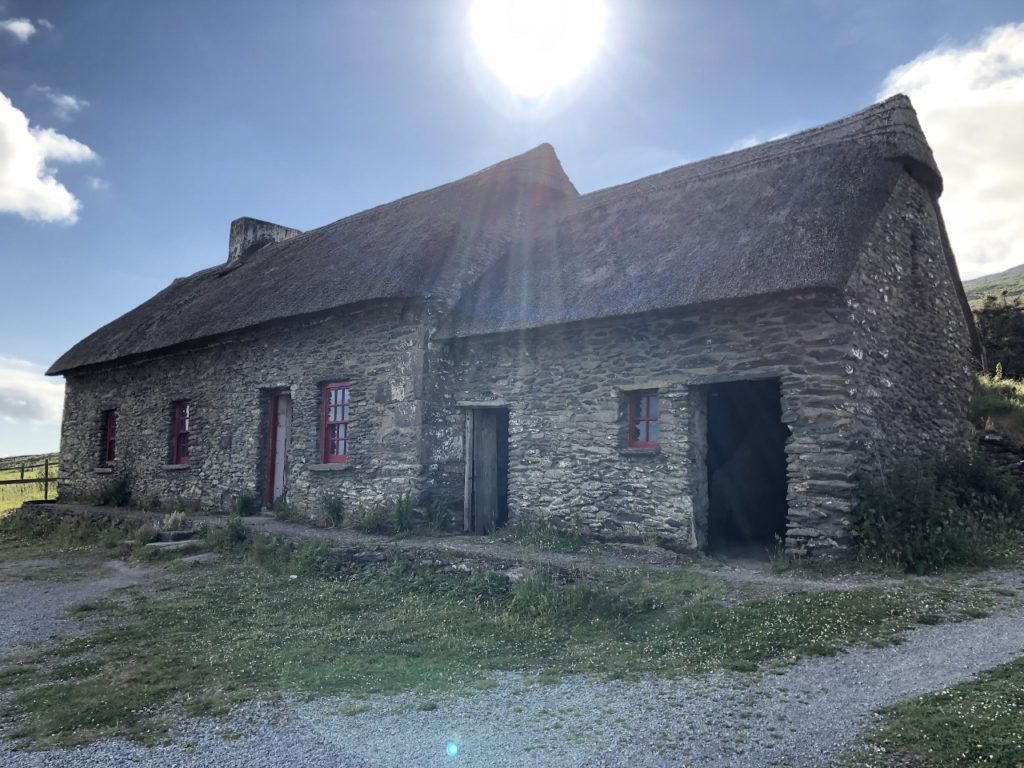
Irish Famine Cottages 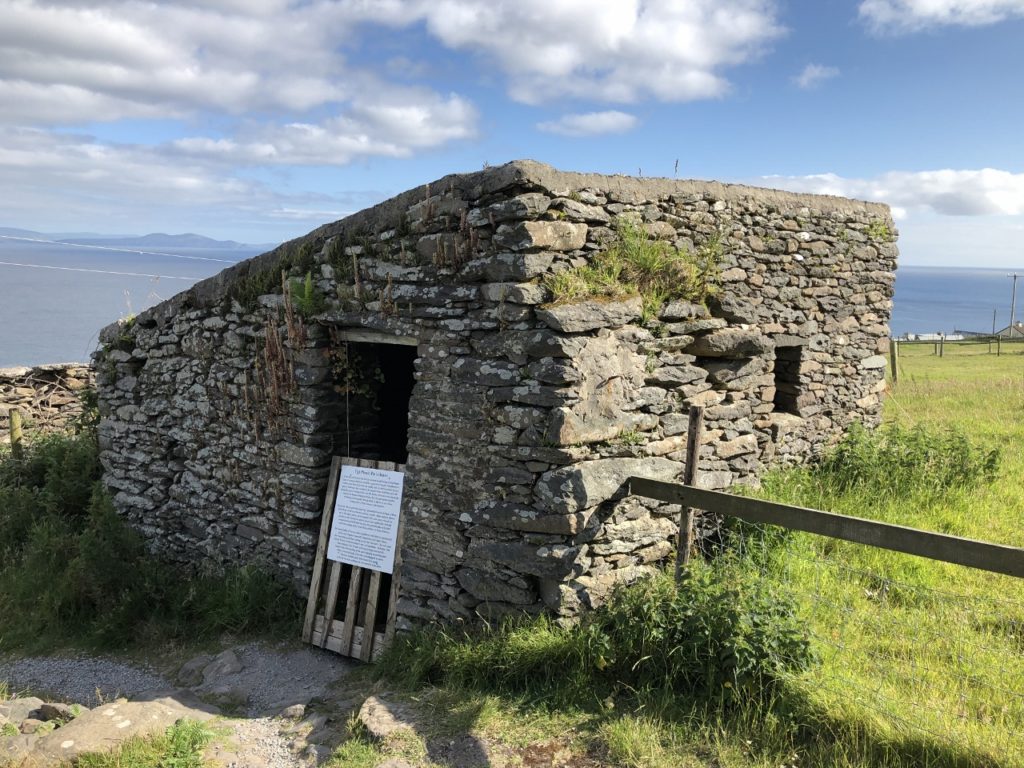

When we finally got back to our farmhouse that night, we got to help feed the lambs. That was a lot of fun. They were adorable! I sat outside at the picnic table, enjoyed the sunset, and made a mental list of what I would do next time I visit the Dingle Peninsula. Here is the list: Blasket Islands, Clogher Beach, Connor Pass, Dingle Distillery, Dingle Way (hiking trail), Dunbeg Fort, Dunquin Pier, Minard Castle, Riasc, Rahinnane Castle, and I want to find the Ogham stones at Clogher & Coumeenole! Told ya. I need a week!

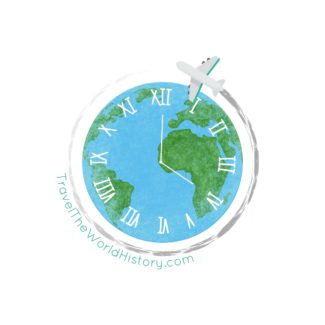
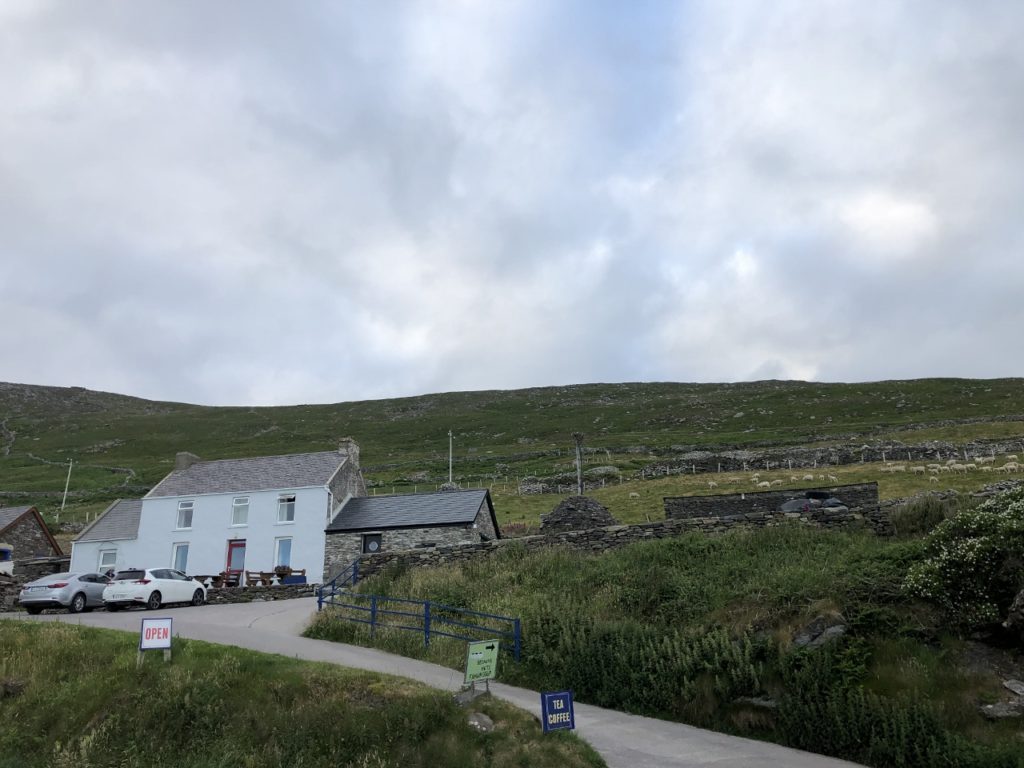
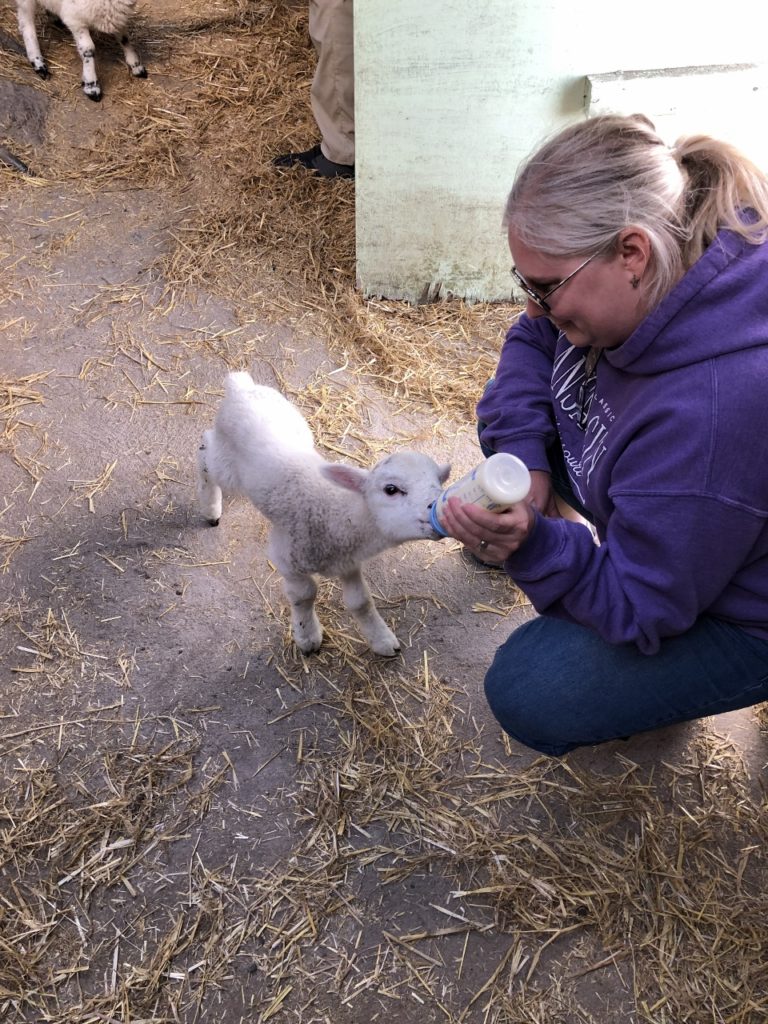
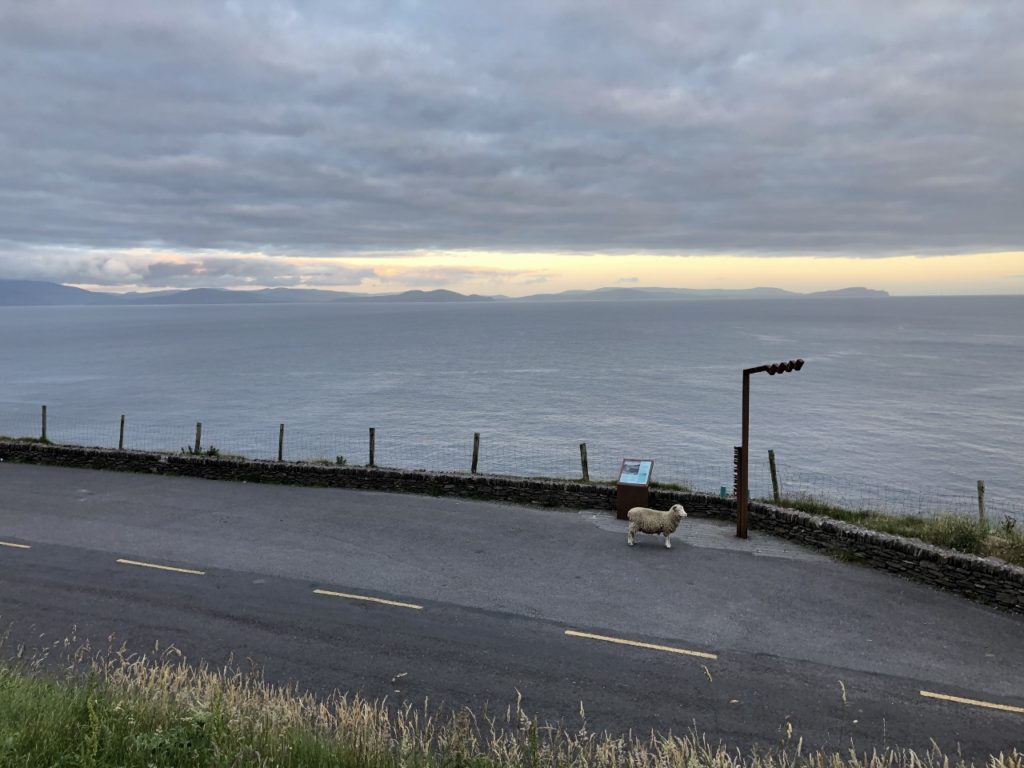
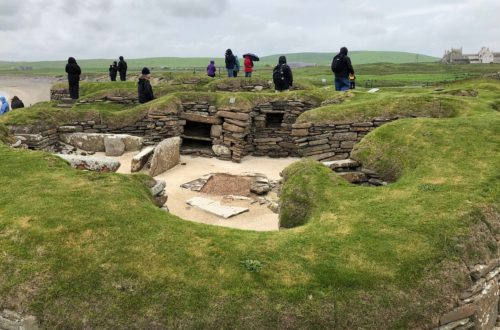
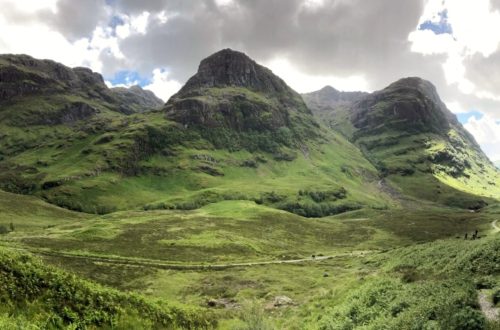
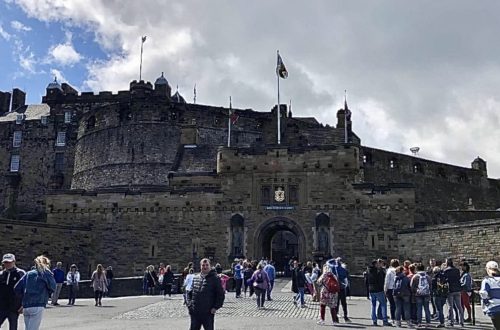
6 Comments
Amy
Love reading about your adventures… my youngest has been talking about Ireland.. this just might be the place to start..
Ness
Ireland is a great place to start international travel! The people are wonderful and friendly!
Janie Sanchez
I love love love this!! We plan on going in about 4 years. I just want to print off your blog for my travel guide!! It’s everything I want to experience!!
Ness
Do it! You will love it! We will chat before you go – Ireland is amazing!
low-impact green wedding
Its like you read my mind! You appear to know so much about this, like you wrote
the book in it or something. I think that you could do with a few pics to drive the message home a bit, but other than that,
this is fantastic blog. An excellent read. I will certainly be
back.
Ness
Thank you! I am new to this and appreciate the feedback!